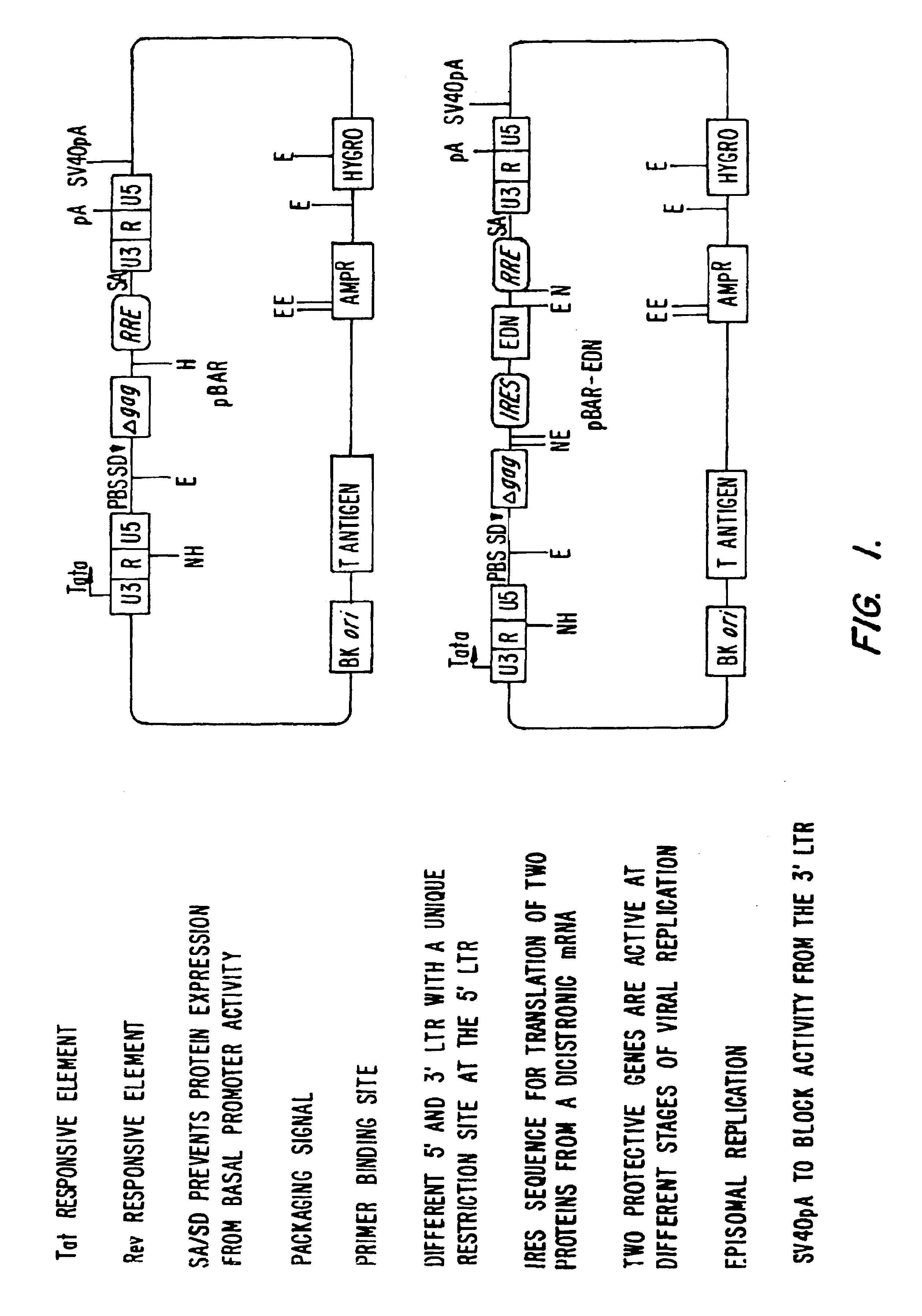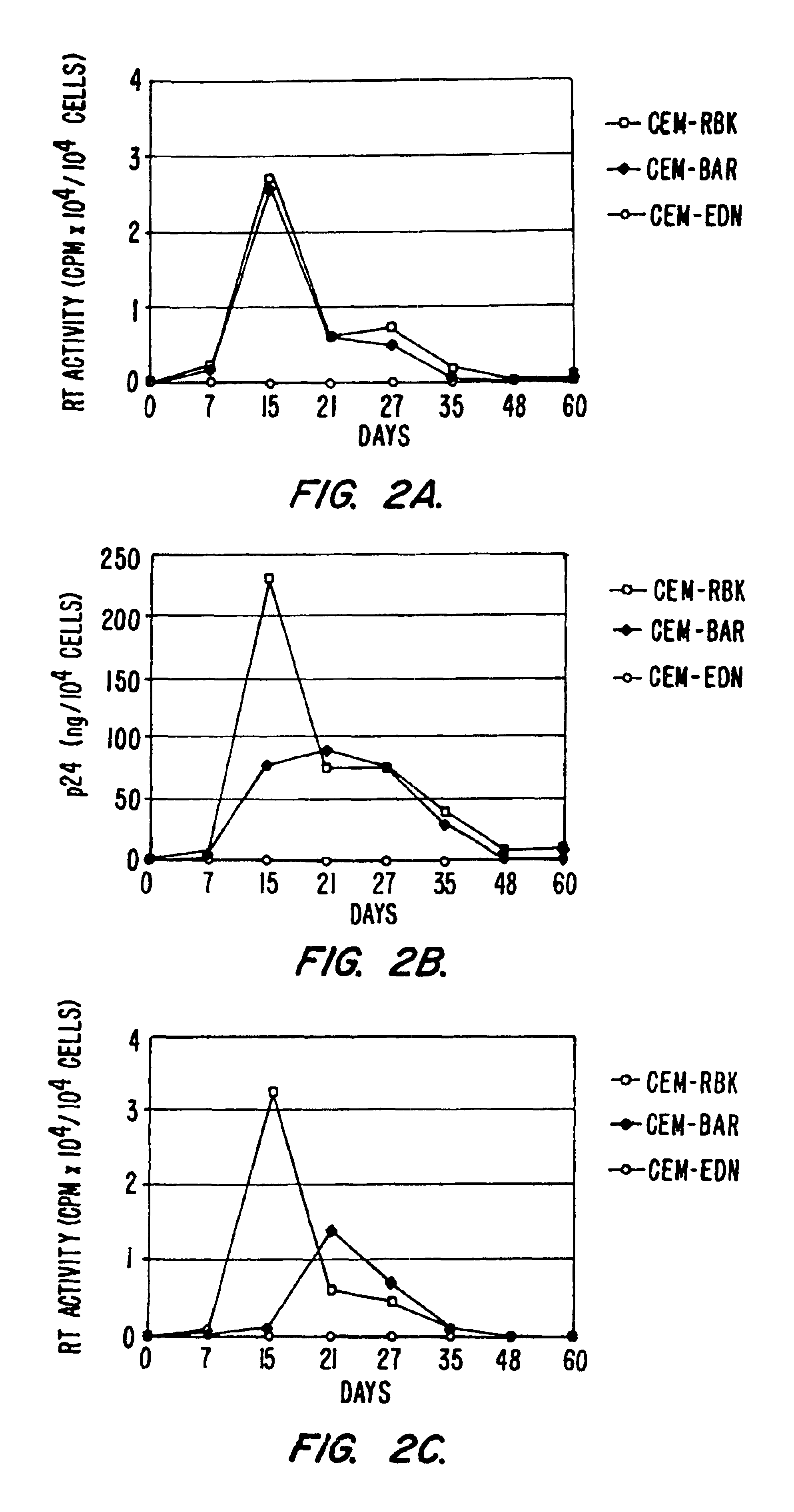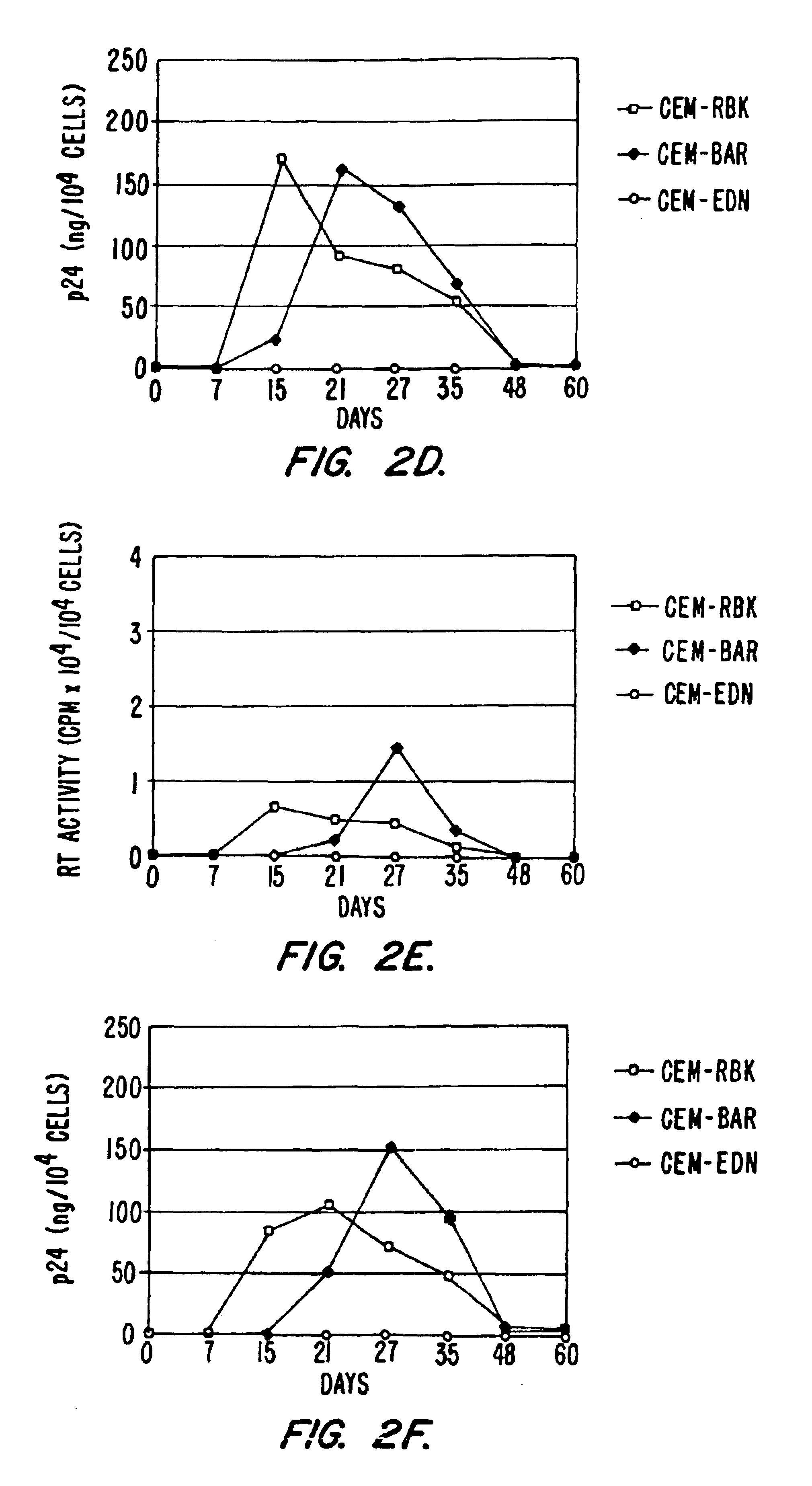Vectors for delivering viral and oncogenic inhibitors
a technology of oncogenic inhibitors and vectors, applied in the direction of viruses/bacteriophages, biocide, genetic material ingredients, etc., can solve the problems of affecting the long-term use of these drugs, affecting and affecting the success of these drugs. , to achieve the effect of facilitating the transport of nucleic acids encoded and inhibiting the translation of viral inhibitors
- Summary
- Abstract
- Description
- Claims
- Application Information
AI Technical Summary
Benefits of technology
Problems solved by technology
Method used
Image
Examples
example 1
Complete Inhibition of HIV-J Replication by Combined Expression of a Gag Dominant Negative Mutant And a Human Ribonuclease in a Tightly Controlled HIV-1 Inducible Vector
[0136]This example provides HIV-1 based expression vectors which produce protective genes tightly regulated by HIV-1 Tat and Rev proteins. The vector contains either a single protective gene (HIV-1 Gag dominant negative mutant [delta-Gag]) or a combination of two different protective genes (delta-Gag and eosinophil-derived neurotoxin [EDN], a human ribonuclease) expressed from a dicistronic mRNA. After stable transfection of CEM T cells and following challenge with HIV-1 , viral production was completly inhibited in cells transduced with the vector producing both delta-Gag and EDN and partially inhibited in cells producing delta-Gag alone. In addition, the expressed mRNA, containing the packaging signal o HIV-1, was incorporated into the HIV-1 virion along with the viral genomic mRNA, as shown after co-transfection i...
example 2
Specific Variants of pBAR
[0175]FIG. 3 shows an alignment between pBAR, pBAR-ONC and pBAR-EDN (See, Example 1 for construction of plasmids). FIG. 4 shows details of pBAR-EDN, including the IRES sequence, the intervening sequence between IRES and the sequence for EDN, and EDN. FIG. 5 shows further constructs of similar design.
[0176]Constructs on the left have an optional deletion of the start codon of gag so that no Gag protein is translated from the nucleic acid which (except for the ATG start codon) otherwise encodes Gag. Inhibitors X and Y, where X and Y are independently selected from the inhibitors described herein, are produced. In one embodiment, the inhibitors are a dominant negative Rev protein and EDN. Typically, an antibiotic resistance allows for selection of transduced cells. On the bottom left, the RRE and INS elements are deleted from the Gag gene. The vector is used for the production of non-toxic genes such as antibodies. The antibodies bind, e.g., HIV or oncogene pro...
example 3
Block of HIV-1 Replication by HIV-1 Induced Expression of Eosinophil-Derived Neurotoxins in Jurkat cells and Demonstration of A Replication Block with Different HIV field Isolates
[0178]To further demonstrate the general effectiveness of the anti-HIV constructs described, additional experiments showing inhibition of different field isolates of HIV-1 were performed. F the time course results of p24 recovery from the supernatant of CEM-RBK, CEM-BAR or CEM-EDN following infection with the primary field isolate HIV-1BZ167 (left) or the molecular clone HIV-1NL4-3 (right). Results indicate that the antiviral activity of EDN is exerted also on viral isolates in addition to HIV-1IIIB (described, e.g., in Example 1).
[0179]To further demonstrate the ability of the constructs to inhibit HIV in cells other than CEM T cells, the constructs were further tested for HIV inhibition in Jurkat T cells. FIG. 7 provides a time course showing a block of HIV-1 replication in Jurkat-EDN cells. Plasmids pRBK...
PUM
| Property | Measurement | Unit |
|---|---|---|
| Responsivity | aaaaa | aaaaa |
Abstract
Description
Claims
Application Information
 Login to View More
Login to View More - Generate Ideas
- Intellectual Property
- Life Sciences
- Materials
- Tech Scout
- Unparalleled Data Quality
- Higher Quality Content
- 60% Fewer Hallucinations
Browse by: Latest US Patents, China's latest patents, Technical Efficacy Thesaurus, Application Domain, Technology Topic, Popular Technical Reports.
© 2025 PatSnap. All rights reserved.Legal|Privacy policy|Modern Slavery Act Transparency Statement|Sitemap|About US| Contact US: help@patsnap.com



